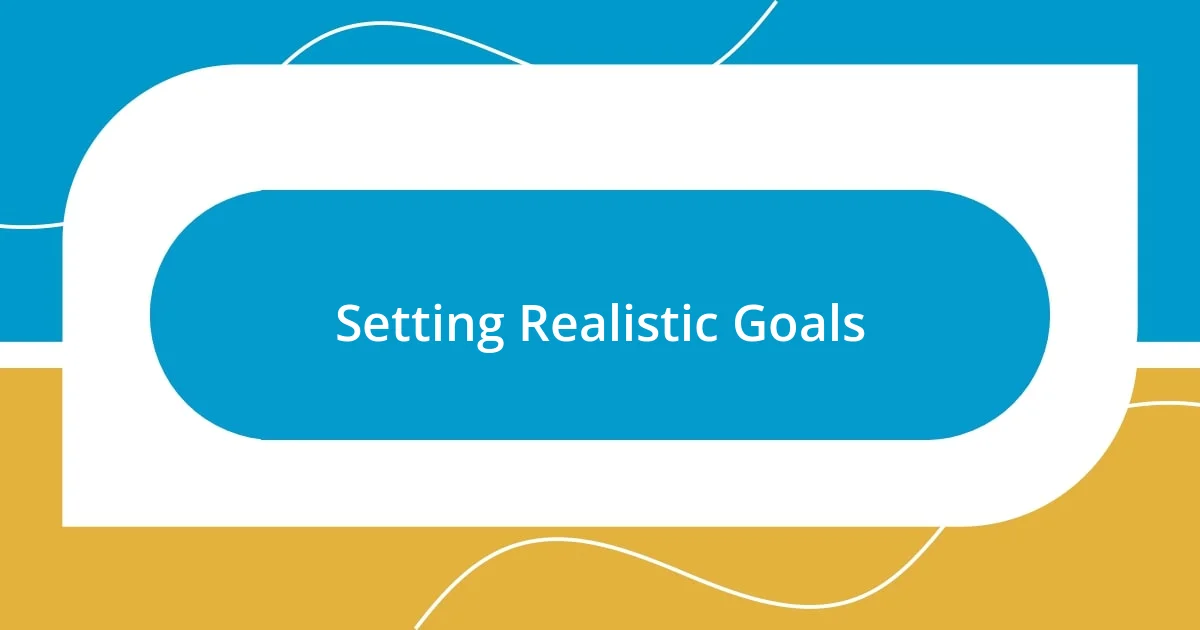Key takeaways:
- Identifying personal fears through self-reflection and writing helps make them manageable and confrontable.
- Utilizing practical techniques like visualization, breathing exercises, and gradual exposure empowers individuals to face and overcome their fears.
- Building a supportive network of friends and mentors fosters confidence and provides encouragement during challenging moments.

Identifying Personal Fears
Identifying my personal fears began with honest self-reflection. I vividly remember sitting alone one evening, feeling overwhelmed by the anxiety that came with public speaking. It struck me that rather than avoiding this fear, I needed to understand the root causes behind it—was it the fear of judgment or perhaps a deeper concern about inadequacy?
One day, I decided to jot down all the things that made me feel uneasy. The more I wrote, the clearer my patterns became. Isn’t it interesting how fears can seem enormous but, when listed, appear manageable? For instance, after writing down my fear of failing in my career, I realized it was often triggered by comparing myself to colleagues. That simple act of writing turned my fears from vague monsters into identifiable challenges.
Reflecting further, I found that some fears stemmed from past experiences. I recall failing a major exam in college and the panic that followed. It made me question my abilities. Have you ever had a similar experience where a single event haunted your self-confidence? Realizing how that incident shaped my view allowed me to confront not just the fear itself, but also the limiting beliefs it had instilled in me.

Understanding Fear Responses
Understanding fear responses requires diving into the physiological and psychological reactions that accompany fear. I often find that fear manifests not just mentally but physically, too. When I think back to my first solo presentation, my heart raced, palms were sweaty, and I felt a lump in my throat. This is what experts refer to as the “fight or flight” response—our body’s way of preparing for danger, even when the threat is just the fear of speaking in front of others.
Interestingly, I’ve discovered that fear can also lead to avoidance behaviors, which create a cycle that reinforces the fear. I remember skipping a networking event because the thought of meeting new people filled me with dread. By avoiding these situations, I was only deepening my anxiety for the next time. It’s crucial to recognize that these responses are natural and common, yet it’s in understanding them that we can find ways to manage our reactions and confront our fears head-on.
I often reflect on how different experiences shape our unique fears. For example, my childhood fear of thunderstorms stemmed from a terrifying night when I had to hide in a closet during a storm. This moment imprinted a fear that took years to unpack. Isn’t it fascinating how certain incidents can have such a profound effect on us? By acknowledging these experiences, we can begin to understand not only our fear responses but also the stories behind them, allowing us to dismantle their hold over our lives.
| Fear Response Type | Description |
|---|---|
| Fight or Flight | A physiological response that prepares the body to confront or evade a perceived threat. |
| Avoidance Behavior | A tendency to evade situations that provoke fear, which can reinforce the fear over time. |

Techniques to Face Fears
Facing fears is not just about understanding them; it’s about actively tackling them with practical techniques. One powerful method I’ve found effective is visualization. I recall vividly preparing for a job interview that had me on edge. Before the big day, I spent time picturing myself walking into the room with confidence, shaking hands, and answering questions smoothly. This mental rehearsal helped me change the narrative from fear to excitement and laid the groundwork for a successful outcome.
Here are some techniques that have worked for me:
- Breathing Exercises: Taking deep breaths before facing a fear can help calm the physiological symptoms of anxiety.
- Gradual Exposure: I started with small steps, like speaking in front of a mirror, before transitioning to larger groups. Each successful attempt built my confidence.
- Affirmations: Reciting positive affirmations daily reinforced my abilities and helped counter negative thoughts.
- Journaling: Writing about my fears, just as I’d done initially, allows me to process emotions and reflect on progress.
Another technique that resonated deeply with me is reframing. I remember standing at the edge of a swimming pool, terrified of diving in. Instead of viewing it as a daunting leap into the deep end, I shifted my perspective to see it as a chance to embrace new experiences. This mental shift transformed anxiety into curiosity. I took the plunge, splashing into the water, and what followed was pure joy.
To manage this technique effectively, I focus on:
- Changing Negative Thoughts: When doubt arises, I consciously replace it with a more empowering thought.
- Creating a Supportive Environment: Surrounding myself with encouraging friends has been crucial during challenging moments.
- Focusing on the Process: Instead of fixating on the end result, I learned to appreciate the journey and the learning moments that come along the way.
By integrating these techniques into my life, I’ve found empowerment in the face of fears, turning what used to be paralyzing moments into opportunities for growth and self-discovery.

Building a Support System
Building a solid support system has been a game-changer for me in overcoming my fears. I remember the first time I shared my fear of public speaking with a close friend. To my surprise, she opened up about her own struggles, and it felt like a weight had been lifted off my shoulders. Isn’t it incredible how connecting with others can not only validate our feelings but also provide a sense of camaraderie in facing our challenges?
Surrounding myself with the right people has made a significant difference in my journey. Whenever I felt anxious about an upcoming presentation, I could count on my friends to cheer me on or even role-play with me. Their encouragement transformed my nervous energy into motivation. I often reflect on how their belief in me sparked a confidence I didn’t know I had. Have you ever noticed how one supportive word can completely shift your mindset?
Creating a nurturing environment extends beyond just friends. I sought out mentors who had conquered their fears in ways I aspired to emulate. One mentor, in particular, shared his own experience of stumbling through his first major speech, normalizing my fear and showing me that growth often comes from discomfort. That advice stuck with me: sharing vulnerabilities can lead to powerful connections and the understanding that we’re not alone in our fears. It’s about building a network that believes in you, and I can’t stress enough how transformative that has been in my own life.

Setting Realistic Goals
Setting realistic goals has been pivotal for me in overcoming my fears. I vividly remember the first time I decided to tackle my fear of heights. Instead of throwing myself into a bungee jump, I set a much smaller goal: just visiting a nearby lookout point that didn’t feel too daunting. Breaking it down into manageable steps made that terrifying experience feel achievable. Have you ever tried easing into a challenge like this?
Another time, when I aimed to improve my public speaking skills, I set a goal of delivering a short speech to a group of friends first. By keeping the audience small and friendly, I was able to focus on my delivery rather than succumbing to overwhelming anxiety. Each different stage pushed me out of my comfort zone just a bit; those small successes gave me the confidence to eventually present in larger settings. It’s fascinating how setting those little milestones can propel us forward, isn’t it?
Moreover, I’ve learned that it’s essential to be flexible with these goals. On one occasion, I planned to join a public speaking course, then realized I was feeling too anxious to commit right away. Instead, I opted for one-on-one coaching, allowing me to adjust my approach. This taught me that when something feels too big, scaling back can still lead to progress. We shouldn’t underestimate the power of adaptability in our journey toward facing what scares us.

Practicing Mindfulness and Relaxation
Practicing mindfulness has been a true lifeline for me when tackling my fears. I remember the first time I sat in a quiet room, focusing solely on my breath. The calming rhythm seemed to wrap around my anxiety, creating a space where I could just be. Have you ever noticed how tuning into the present moment can peel away layers of stress? For me, it was an eye-opening experience that grounded me.
Incorporating relaxation techniques is something I still cherish. I often turn to deep breathing exercises before facing a challenging situation. Just a few inhalations and exhalations can clear my mind and curb that rising tide of panic. I’ve found that when I start to feel overwhelmed, taking a moment to breathe deeply reminds me that I am in control. Remember, it’s okay to pause—what has that moment of stillness meant for your own fear responses?
Engaging in mindfulness doesn’t stop at breathing; I’ve explored guided meditations too. There was one, in particular, that I often revisit, focusing on letting go of fear. Listening to a soothing voice slowly helped me visualize my anxieties melting away. It’s been incredible to see how simplicity, like tuning in to soothing sounds or even visualizations, can transform my mental landscape. Have you tried finding your own rhythm in mindfulness? It can be a powerful ally in overcoming hurdles that once felt insurmountable.

Reflecting on Progress and Growth
Reflecting on my journey, I often find myself amazed at how far I’ve come. One day, after an unexpected confrontation with my fear of public speaking, I took a moment to jot down my experiences. Seeing my thoughts on paper illuminated the progress that seemed invisible in the hustle of daily life. Have you ever paused to truly appreciate the steps you’ve taken? It’s essential; those reflections can act as your motivating compass.
Recently, I stumbled upon an old journal while cleaning out my desk. It was filled with fears I had once written about, and to my surprise, many of them no longer held power over me. I couldn’t help but smile, realizing that the challenges I faced then felt monumental, but they seem trivial now. Isn’t it comforting to acknowledge how challenges shape us? Each entry marked a point of bravery, no matter how small it seemed at the time, and I cherish those moments of growth.
As I look back, I understand that my growth didn’t happen overnight; it was more like a series of gentle waves—sometimes surging, sometimes retreating. I feel profound gratitude for the moments of vulnerability that allowed me to grow, like when I expressed my fears to a close friend while expecting to be judged, only to be met with empathy and support. This taught me that growth thrives in a nurturing environment. How do your own experiences or conversations with loved ones influence your journey? I believe they can be the spark you need to propel yourself forward.














